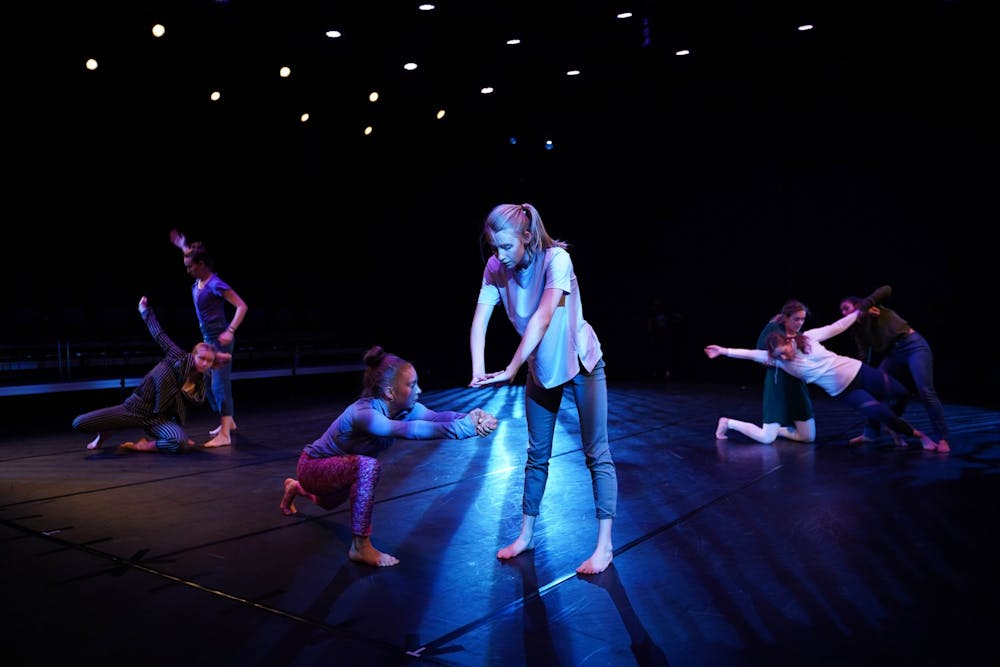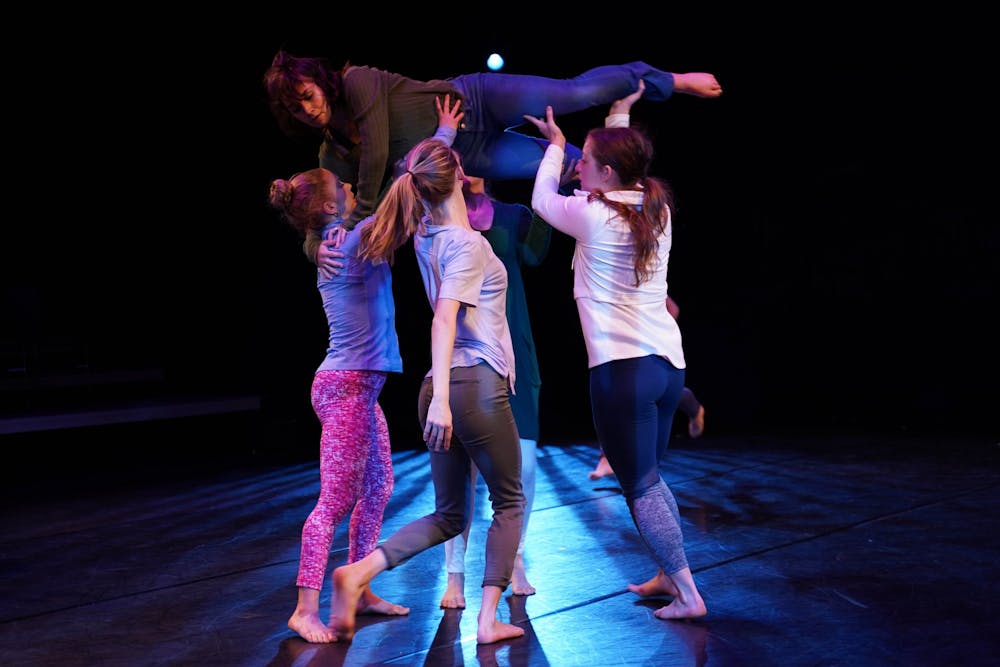Elon’s Performing Arts Department hopes to navigate the complexities of today’s social landscape in its 2019 Fall Dance Concert.
This year’s concert features eight original numbers by faculty, guest artists and students. Each performance embodies themes of social justice and the human condition, with the end goal of promoting inclusivity within Elon and the greater community.
Assistant Professor of Dance Renay Aumiller is the artistic director for the concert.
“My role is more facilitative,” Aumiller said. “Overseeing how the whole entire show is designed, from the order, to content and finally, presentation.”
While the dances’ concepts are thematically complex, Aumiller said she hopes the audience can view the concert in its entirety as a representation of the human experience.
“The small things we do to create our world matter,” Aumiller said. “These are people’s reactions to the world they live in.’’
A variety of voices
The concert is Elon’s only dance presentation that combines the work of students, faculty and guests from the industry.
Christal Brown, chair of dance at Middlebury College, and New York-based choreographer Leah Wilkes were both invited to choreograph for the concert, providing Elon dance students with opportunities to learn from and network with professionals in the industry.
Assistant Professor of Performing Arts Keshia Wall and Assistant Professor of Dance Jen Guy Metcalf, both choreographed routines.

Seniors Shelby Durham and Annie Marx and junior Sarah DeSordi have all danced in the Fall Concert before. However, this year they will bring something new to the table — their own choreography. The dancers were chosen to serve as student choreographers and will debut their own work at the concert.
As a curriculum requirement, each dance major designs and choreographs a piece throughout their sophomore and junior years. Then, a handful of pieces are selected by a council of faculty members to be represented in the concert. Durham, Marx and DeSordi began working on their choreography last fall.
“Having a wide array of voices is important,’’ Aumiller said.
This will be emphasized physically in the layout of the performance space, where the audience will sit on three sides of the performers. This offers a more immersive experience for the audience while furthering the goal of inclusivity in shared spaces.
A wide scope of inspiration
Artistic influences for each performance span genres, decades and countries.
Wall’s routine tackles the themes of feminism and gender inequity, while Aumiller’s piece is a comedic duet, exaggerating the nuances of human interaction.
Metcalf looked to the past for her inspiration, specifically to World War II. Her piece, a contemporary ballet titled “All the Light We Cannot See,” is set in Nazi-occupied France, is inspired by the bestselling novel and incorporates audio from an actual BBC broadcast aired during Nazi occupation.
Inspiration for other pieces includes cult behavior, groupthink and political campaigns. DeSordi took a more localized approach for her composition.
“I was really trying to explore my capabilities and the idea that everything is choreography,” DeSordi said, a dance performance and choreography major.
“This piece was pulled from a culmination of my own exhaustive improv — most of which I’ve cut out now — and movements or gestures I would pick out of my everyday life and surroundings,” DeSordi said. She specifically references the emphatic gestures made by professors to convey their points.
When asked about the biggest takeaway from her experience, DeSordi said, “Rather than recognizing choreography as set, I’ve learned to view it as something that will constantly remain in flux.” Though her routine has gone through countless reworks, DeSordi said she can’t wait to finally see it come together.
“I’m most excited to see the piece I choreographed on stage, as much as I am nervous for it,” DeSordi said.
DeSordi will also dance in both of the guest choreographed pieces.
An intense process
At the beginning of the semester, students in Elon’s Performing Arts Department go through an audition process to determine the dances they will be selected to perform in.
After the August casting, dance members rehearse for three to six hours per week to prepare for the show.

The rehearsal process for Wilkes’ and Brown’s pieces began in October. The cast learned, rehearsed and polished the new routines over 16-hour weekends.
As DeSordi juggles multiple majors, a part-time job, rehearsals for guest choreographers and her own piece, she described the experiences as stressful, yet rewarding.
“It’s tough, but it’s worth getting to explore and deepen my passions and figure out where it’s going to take me someday,” DeSordi said.
After the curtain call
“With a project of this scope, it can be impossible to predict what the audience will take away from the performance,” Aumiller said.
Aumiller, along with the rest of the Performing Arts Department, hopes people understands the necessity of an inclusive culture. However, Aumiller said she encourages audience members to derive their own deeper meanings from the routines.
This sentiment was echoed by other choreographers, including Metcalf.
“It can be interpreted in many different ways. … It will differ from person to person,” Metcalf said.
Explaining her own carefully constructed piece, Aumiller said, “Dance is like a poem . . . and I just want to lead the audience down a potential pathway.”
When asked how she hopes people view the Fall Dance Concert, Aumiller smiled and said, “As long as they leave with something, I think it was incredibly successful.”


